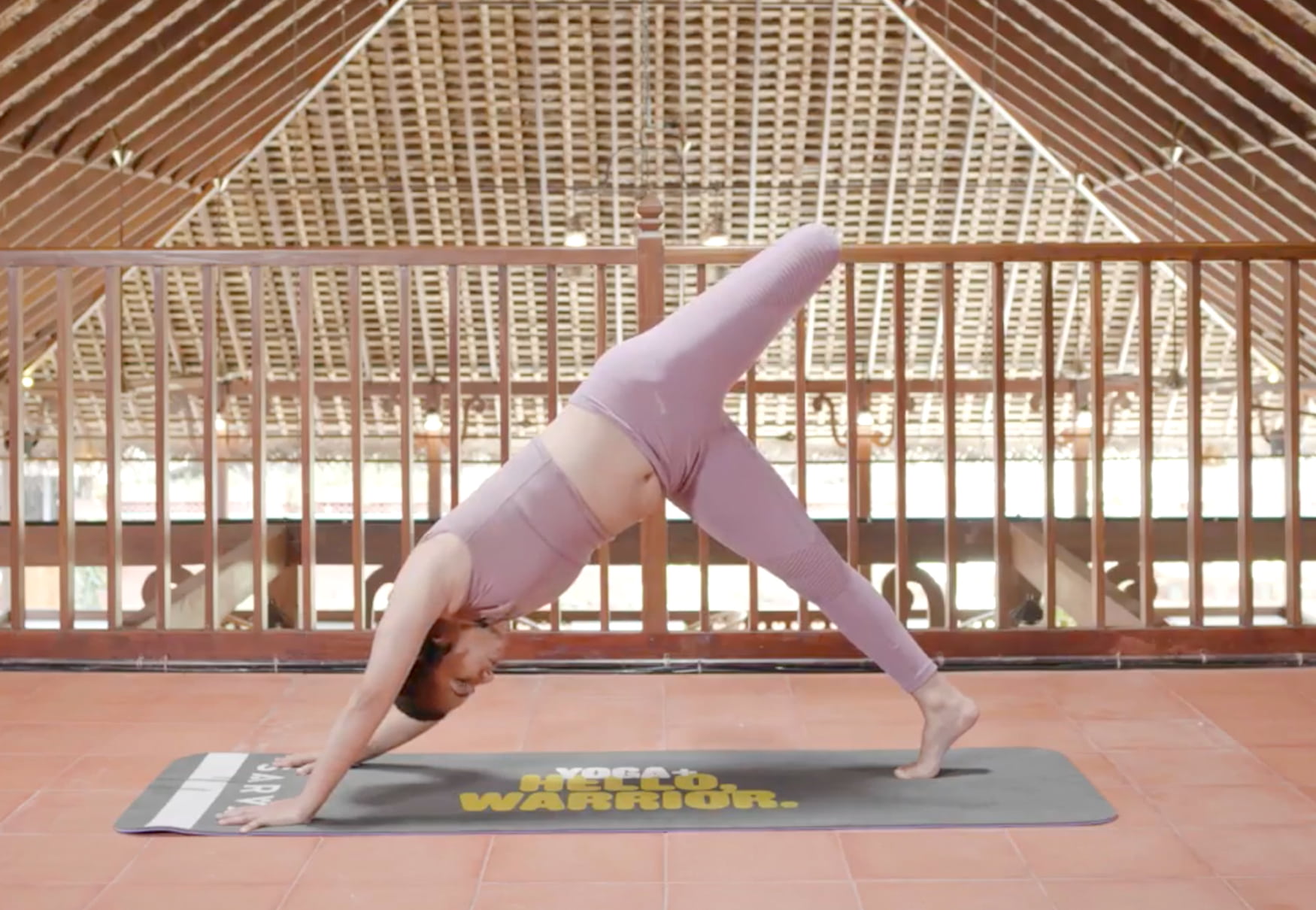Hot Yoga: What Is It? How To Do? And Benefits of Hot Yoga | Sarva Yoga

Are you a yoga fanatic? If yes, then you must have then probably heard about Hot Yoga in the last few years. It offers the same advantages as traditional Yoga, such as stress reduction, increased strength, and flexibility.
But on the other hand, hot Yoga can provide your heart, lungs, and muscles with an even better, more intense workout when the heat is ramped up.
Are you curious about the various ways that hot Yoga might benefit you? This article will go over the benefits of this sweat-inducing activity and how to get started.
What Is Hot Yoga?
The term "hot yoga" refers to a place that has been heated to a higher temperature than usual. The temperature can be adjusted to the yoga instructor's preference, but it is often between 80 and 100 degrees Fahrenheit (27 and 38 degrees Celsius).
The session can contain a variety of asanas, and hot yoga classes can be planned at any time, but the practitioner must correctly prepare his meals. Music that affects the flow and enables class participants to express themselves is generally included in hot yoga classes.
What's The Difference Between Yoga And Hot Yoga?
The main difference between Yoga and hot Yoga are as follows:
- Traditional Yoga is a discipline that emphasises not only asana but also other practices such as pranayama, shatkarma, and meditation.
- Hot Yoga, on the other hand, is a type of Yoga in which asanas are prioritised and performed as an activity.
- Traditional Yoga employs various techniques to promote physical, mental, and spiritual well-being and cleansing. On the other hand hot yoga is directly related to spiritual enlightenment.
- Traditional Yoga is an ancient Indian practice, whereas hot Yoga is a westernised conventional yoga version that mimics India's climatic conditions to encourage perspiration.
- Traditional Yoga may be done almost anywhere. However, hot yoga is done in a higher temperature and humidity room.
What's Hot Yoga Good For?
Hot Yoga can bring the following benefits if done appropriately and safely:
1. Enhances adaptability 2. Increases bone density 3. Reduces stress 4. Helps burn more calories 5. Nourishes the skin
Is Hot Yoga Unhealthy?
Although most individuals can comfortably practise hot Yoga, some people may experience overstretching and dehydration. In extreme cases, heat exhaustion and heat stroke can develop. Drink plenty of water, ease into classes, and leave if the heat becomes too much for you to effectively do hot Yoga.
How Hot Is Hot Yoga?
The term "hot yoga" refers to a place that has been heated to a higher temperature than usual. Of course, the yoga instructor can set the temperature to whatever he or she wants, although it's normally between 80 and 100 degrees Fahrenheit (27 and 38 degrees Celsius).
What To Wear To Do Hot Yoga?
In a hot yoga session, your best friend is a fabric that dries rapidly and absorbs perspiration. Avoid wearing anything made entirely of cotton because it will absorb sweat and make your clothes heavier. Look for sportswear-inspired textiles in pants, tops, and sports bras. Stretchy, comfortable clothing with a sweat-wicking ability that quickly absorbs excess moisture while eliminating sweat stains and stink are among them.
Many training clothes have moisture-wicking or breathable labels on them. These textiles are usually constructed of lightweight materials like mesh or polyester, which are the workhorses of training gear since they are durable and wrinkle-free.
Benefits of Doing Hot Yoga
The benefits of doing Hot Yoga are as follows:
Greater adaptability Greater lung capacity aids in the reduction of depression symptoms Increased bone mass Calories are burned Assists with stress management Skin health is improved Blood glucose levels are regulated Improves the health of the heart
Who Can Do Hot Yoga And Who Should Avoid?
Hot Yoga has a wide range of benefits for the mind and the body. Hot Yoga can help you achieve various goals, including burning calories, increasing bone density, boosting cardiovascular fitness, increasing flexibility, relieving depression, and reducing stress.
Before participating in a hot yoga session, see your doctor if you have any health concerns, such as heart or artery problems, anorexia nervosa, diabetesa history of fainting, or heat sensitivity. Because of the intensity of the practice and the high temperatures, hot Yoga is not recommended for everyone.
Before trying hot Yoga, see your doctor, especially if you have any health problems or are pregnant. If you have no health concerns and want to take a hot yoga class, make sure you drink lots of water. If you feel dizzy, lightheaded, or ill, come to a halt and relax in a calming stance before exiting the room.
Sarva
Sarva's Yoga focuses on linking 7 billion breaths. After commencing practise with Sarva and tracking weekly performance, Sarva provides professional recommendations and ongoing support. The Sarva offers its clients a wide range of options and teaches 25 types of Yoga.
Conclusion
We hope you now have a better understanding of what hot yoga is and how it can benefit your body. Not only that, but we've attempted to cover all of the other features of hot yoga. We've answered some of the most frequently asked questions about how to do hot yoga near the end of this post!
